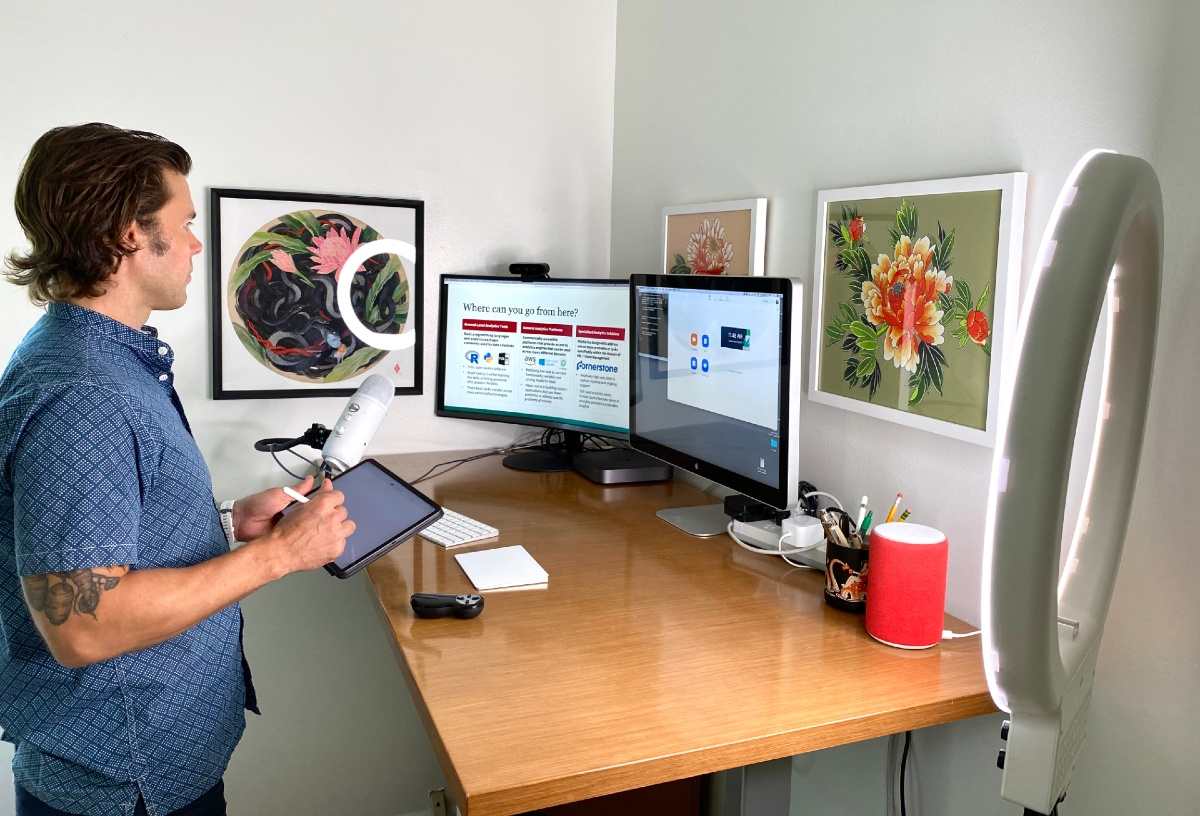Making hybrid teaching work during a time of massive disruption
- September 14, 2020
- By WashU Olin Business School
- 2 minute read

Teaching during times of disruption requires creativity, innovation and flexibility to ensure students get the support they need to achieve core course learning objectives.
To help make this possible, Olin’s Center for Digital Education provides support to faculty to ensure successful hybrid teaching techniques.
“Successful online teaching focuses on fostering connections between faculty and students, peer-to-peer learning and crafting engaging lessons that compel students to see the relevance and significance of what they are learning, just as we do on campus.”
But really effective online instructors not only know how to convey the ‘So, what?’ of their subject, they also know how to make their students feel seen and heard.
Instructional Designer Kella Thornton
CDE Associate Director Nina Kim explains that “enhancing student learning experiences is a core part of the CDE mission. Through working with faculty one-on-one and group training workshops, we’ve expanded both the instructional and technical toolsets faculty can use to construct their courses.”
From an instructional standpoint, many faculty are expanding their activities to include more interaction and engagement with students. They are also diversifying content types by creating a rich variety of course materials.
“On the technical side, faculty are strategically adopting additional technologies that will allow them to better connect and communicate with students,” Kim said.
But before you click record
In order to produce the best quality of content from home, the CDE’s media team—Media Production Manager Shawn Bell, Video Production Specialist Charlie Drexler and Multimedia Developer Wes Murrell—have a few suggestions.
They define the ideal home tech setup as one that works best for the instructor’s teaching style, enabling them to cater to their instructional needs.
“Remember, you can present information in more than one type of media; utilizing different tools can increase student engagement,” Bell said.
The CDE has developed numerous resources for teaching with tools that you already have—like Zoom. The guides are available on the CDE’s remote media production page and will support faculty understanding of various topics in media production (e.g., camera angles, framing, recording processes, USB microphones).
“When planning your ideal setup, look for a location with natural light, soft furnishings (to minimize echo) and isolation from noise like air conditioners,” Bell said. “Once you find your ideal setup, be consistent.”
For more media pointers, watch these videos on best practices for lighting and camera placement and recording sound. To find online teaching resources, view the Center for Digital Education’s recorded training workshops, subscribe to the CDE’s YouTube channel and watch for the center’s monthly newsletter.
Pictured above: Olin’s Andrew Knight, professor of organizational behavior, demonstrating a successful at-home tech setup.
Media inquiries
For assistance with media inquiries and to find faculty experts, please contact Washington University Marketing & Communications.
Monday–Friday, 8:30 to 5 p.m.
Sara Savat
Senior News Director, Business and Social Sciences
